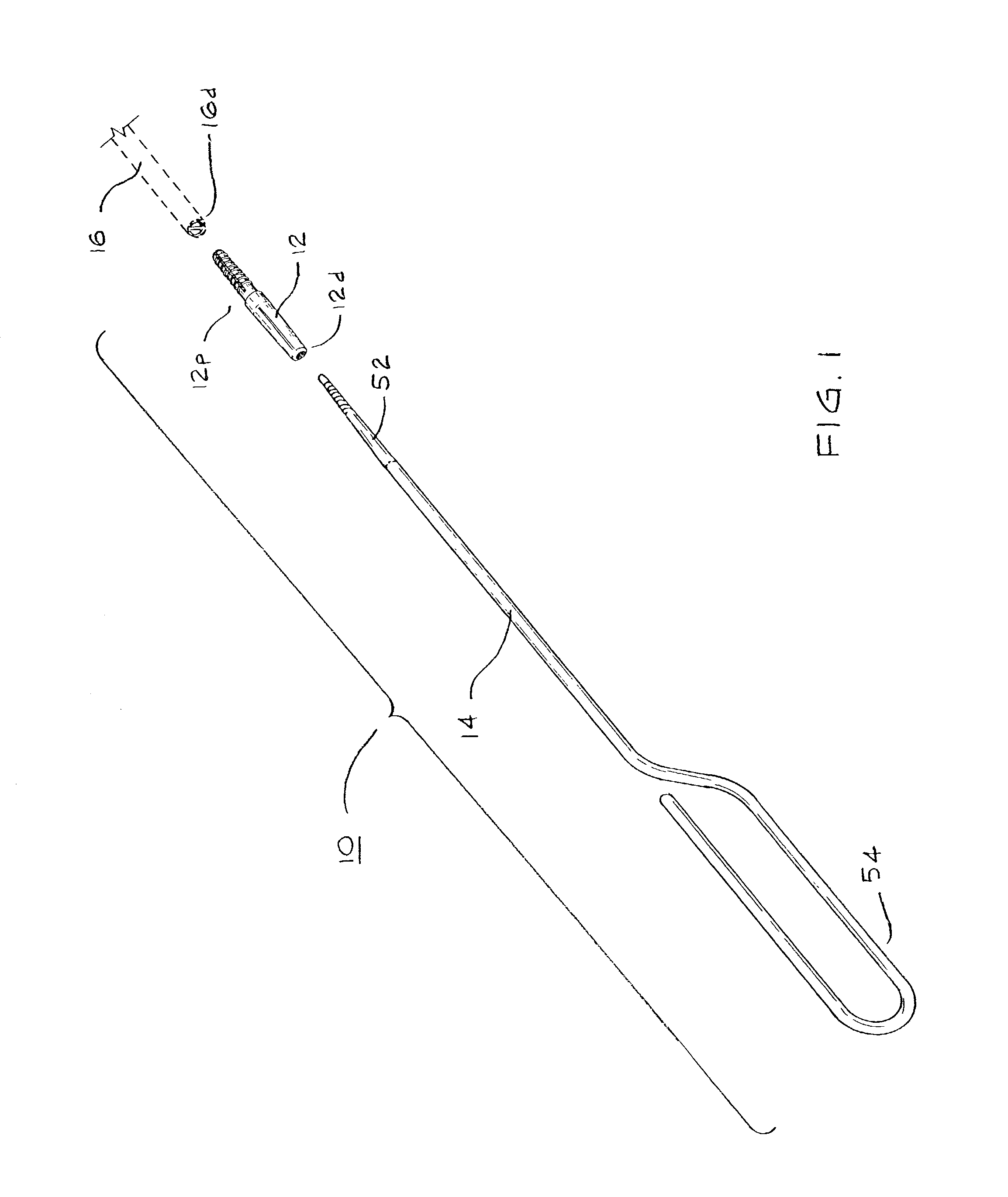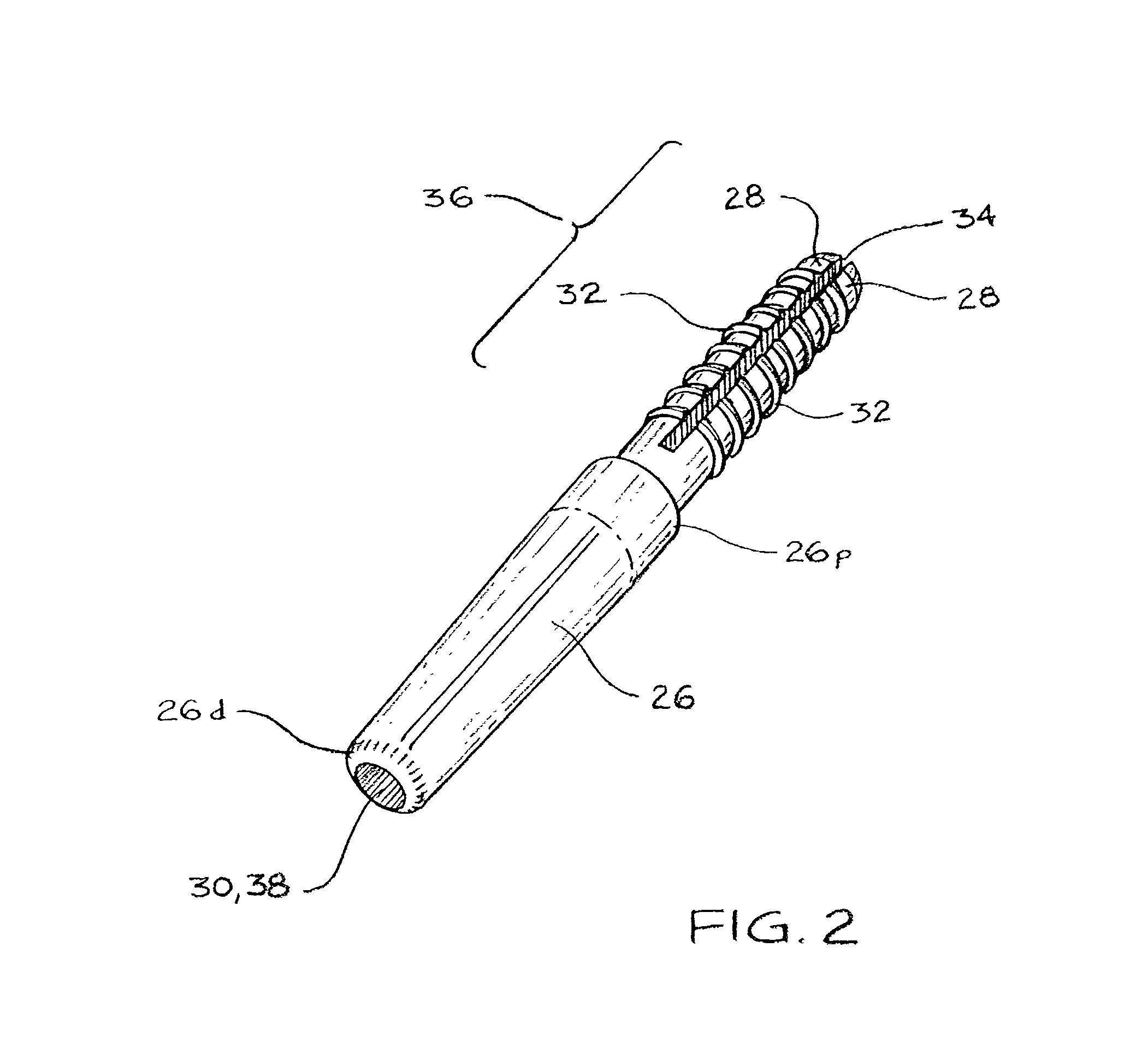Apparatus and method for reverse tunneling a multi-lumen catheter in a patient
a multi-lumen catheter and reverse tunneling technology, applied in the field of medical instruments, can solve the problems of ineffective dialysis treatment, lack of accuracy of catheter tip placement in double-lumen catheters, and present certain deficiencies
- Summary
- Abstract
- Description
- Claims
- Application Information
AI Technical Summary
Benefits of technology
Problems solved by technology
Method used
Image
Examples
Embodiment Construction
[0020]For the purposes of the following description and the claims appended hereto, the relative term “proximal” refers to those portions of a catheter and those portions of components of the catheter which are nearest the insertion end of the catheter, that is, the end of the catheter that is inserted into an area of a patient's body being catheterized, such as a blood vessel. Conversely, the relative term “distal” refers to those portions of a catheter and those portions of components of the catheter which are farthest from the insertion end of the catheter.
[0021]As shown the Figures, an apparatus 10 is provided for reverse tunneling a multilumen catheter 16 in a patient. In the embodiment shown in FIG. 1, the apparatus 10 includes a connector 12 and a trocar 14. The connector 12 includes a proximal end 12p that is configured for selective connection to the distal end 16d of a multilumen catheter tube 16. The connector 12 also includes a distal end 12d that is configured for selec...
PUM
 Login to View More
Login to View More Abstract
Description
Claims
Application Information
 Login to View More
Login to View More - R&D
- Intellectual Property
- Life Sciences
- Materials
- Tech Scout
- Unparalleled Data Quality
- Higher Quality Content
- 60% Fewer Hallucinations
Browse by: Latest US Patents, China's latest patents, Technical Efficacy Thesaurus, Application Domain, Technology Topic, Popular Technical Reports.
© 2025 PatSnap. All rights reserved.Legal|Privacy policy|Modern Slavery Act Transparency Statement|Sitemap|About US| Contact US: help@patsnap.com



